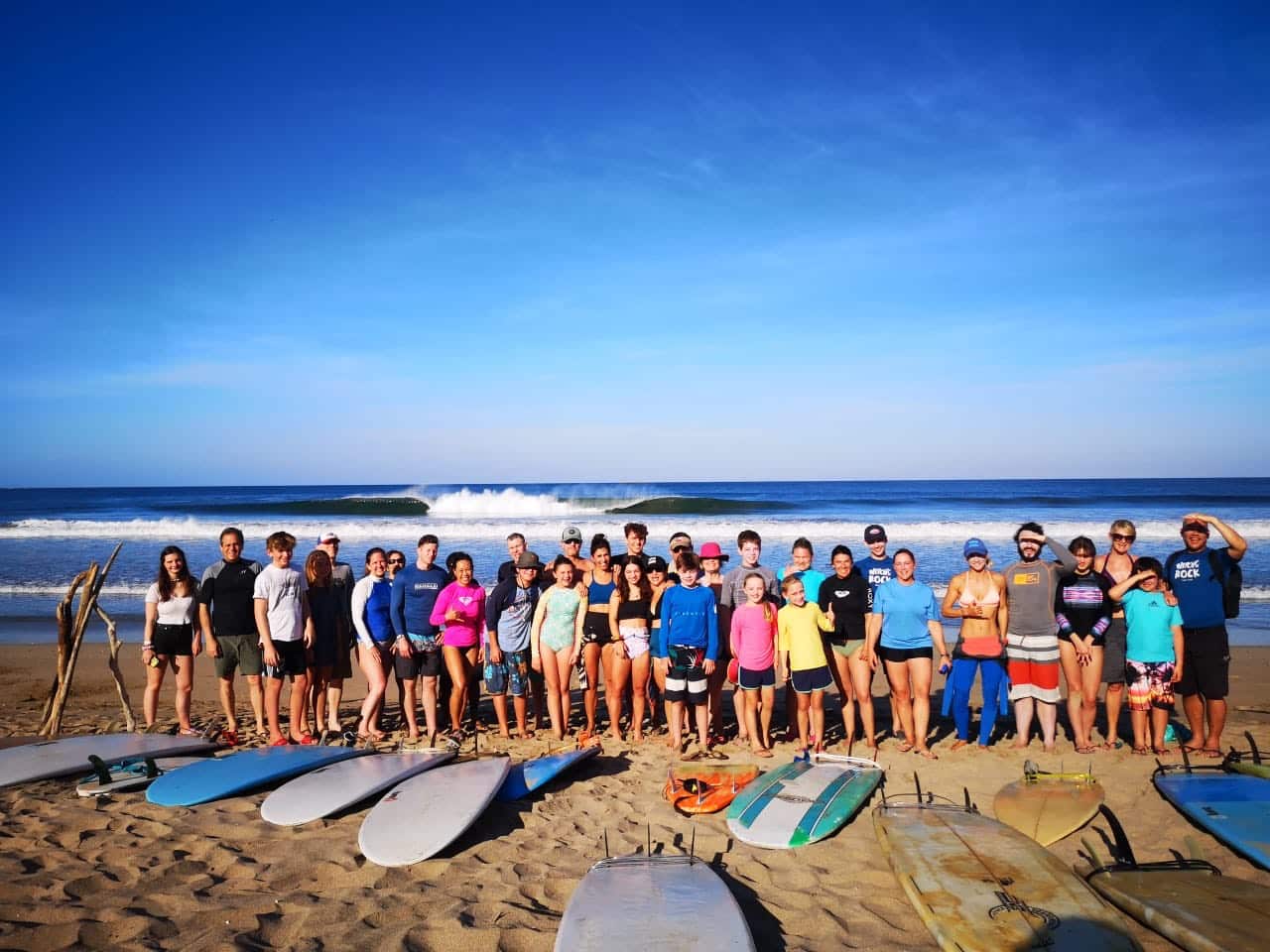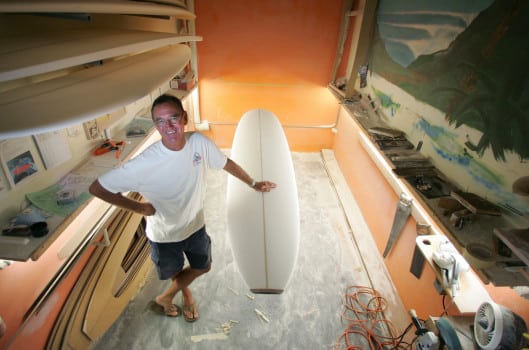Surfing in Costa Rica is the dream — warm water, consistent waves, and a coastline dotted with beach towns where life moves to the rhythm of the tides. But the best surf trips do not happen by accident. A little preparation goes a long way in making sure you paddle out with confidence, stay safe, and enjoy every moment.
Whether it is your very first time surfing or you already spend weekends chasing swells back home, preparing properly will make your Costa Rica surf adventure smoother and more fun. This guide will cover fitness, safety in the water, travel logistics, and smart packing tips that will help you arrive ready to surf.
Why preparation matters
It is easy to picture yourself walking barefoot to the sand, board under your arm, warm breeze on your face. But surfing is demanding. Paddling, duck diving, popping up, and riding waves use muscles you may not train often. The ocean in Costa Rica is playful but also powerful, especially when bigger swells roll through. By arriving prepared, you will have more energy in the lineup, avoid common injuries, and maximize your time on the board.
Fitness: building surf strength before your trip
You do not need to be a professional athlete to enjoy surfing in Costa Rica, but a bit of targeted training makes a big difference. Focus on three key areas: paddling strength, core stability, and endurance.
Paddling strength
Paddling is ninety percent of surfing. It gets you out through the whitewater and into position for waves. Strong shoulders, upper back, and triceps will keep you moving efficiently.
Exercises to try before your trip:
Swimming: The best cross training for paddling. Mix sprints with steady laps.
Push ups: Build arm and chest strength for paddling power.
Pull ups or resistance bands: Strengthen your lats and shoulders.
Core stability
Your core keeps you balanced when you pop up and ride down the face of a wave. A stable core means fewer wipeouts and better control.
Exercises to add:
Planks and side planks
Russian twists with a medicine ball
Yoga or Pilates routines focused on balance
Endurance and flexibility
Surf sessions often last two to three hours. You want to feel strong the whole time. Cardio training such as running, cycling, or interval workouts will build stamina. Flexibility training prevents injuries and helps your body recover faster.
Tip: Aim to start training four to six weeks before your trip. Even a few sessions each week will improve your time in the water.
Safety in the ocean: what to know before you paddle out
The warm Pacific waters of Costa Rica invite you in, but the ocean deserves respect. Understanding local conditions and safety basics will give you confidence.
Respect the weather and lightning
Costa Rica does experience tropical thunderstorms, especially during the rainy season. Lightning is dangerous on the beach and in the water. If you hear thunder, clear the beach and wait until the storm passes. Most storms move quickly, and mornings are often clear even in rainy season.
Know the tides
Many Costa Rican surf spots change character with the tide. Beginners usually do better at high tide when waves are softer. Intermediates and advanced surfers often prefer mid or low tide when waves stand up and peel faster. Check the local tide chart daily.
Rip currents and how to handle them
Rip currents are common along long sandy beaches. They are channels of water moving out to sea. If you get caught in one, stay calm, paddle parallel to shore until you are free, then paddle back in. Never try to fight the rip directly.
Respect the lineup
Costa Rican surf culture is friendly, but it still follows etiquette. Wait your turn, do not drop in on someone’s wave, and share stoke in the water. A smile and a “Pura Vida” go a long way.
Travel safety and logistics in Costa Rica
Renting a car
Many travelers rent a car to explore beaches. It is generally safe if you follow simple rules:
- Use well known rental companies.
- Take photos of the car before driving off.
- Do not leave valuables visible inside the car.
- Drive cautiously on rural roads, especially in rainy season when potholes can form.
Getting around without a car
If you are staying in Tamarindo, you may not need a car. Most surf breaks, restaurants, and shops are walkable or a short taxi ride away. Shuttle services also run between major towns and airports.
Guanacaste safety
Guanacaste, home to Tamarindo and many famous surf spots, is considered one of the safest regions in Costa Rica. Normal travel awareness applies — keep an eye on your belongings, lock your room, and avoid walking alone late at night in very quiet areas.
Packing for your surf trip
Travel light but smart. You will find surf shops and board rentals everywhere, but certain items are worth bringing.
Must bring items
- Reef safe sunscreen: The sun is strong, and protecting reefs is important.
- Rash guard or surf shirt: For sun protection and to avoid board rash.
- Swimwear: At least two sets so one can dry while you wear the other.
- Reusable water bottle: Stay hydrated in tropical heat.
- Travel insurance: Always a smart choice for surf trips.
Optional but useful
- Surfboard: If you have a magic board and cannot live without it. Otherwise, rent locally to avoid airline fees.
- Waterproof phone case: Handy for quick photos or if you plan to paddle with a guide.
- Small first aid kit: For reef cuts or blisters.
Mindset: how to approach your surf week
Remember that surfing is not just about catching every wave. It is about being present, learning, and enjoying the process. Some days the ocean will be playful. Other days it will test you. Celebrate the small wins — your first green wave, your longest ride, or simply being in warm water with howler monkeys calling in the background.
FAQs
How do I get in shape for a surf trip to Costa Rica
Focus on swimming, paddling exercises, planks, and cardio workouts. Even two to three sessions per week before your trip will help.
Is it safe to surf in Costa Rica during thunderstorms
No. Leave the water immediately if you see lightning or hear thunder. Wait until the storm passes.
Is it safe to rent a car in Costa Rica
Yes, if you use trusted rental companies and avoid leaving valuables inside the vehicle. Drive carefully, especially in rainy season.
Do I need a wetsuit in Costa Rica
No. The water stays warm all year. A rash guard is enough.
What should I pack for a surf trip in Costa Rica
Bring reef safe sunscreen, rash guards, swimwear, and a reusable water bottle. Boards can be rented locally.
Final thoughts
Preparation is part of the fun. Training your body, learning about tides, and packing the right gear build anticipation before your trip even starts. When you finally arrive in Costa Rica, you will paddle out ready, confident, and excited to embrace the waves.
The ocean will still surprise you, and that is the beauty of surfing. But with preparation, you will be ready for the challenge and the joy. When you are standing on your board with warm water rushing under your feet, you will know it was worth the effort.
Pura Vida — see you in Tamarindo.





